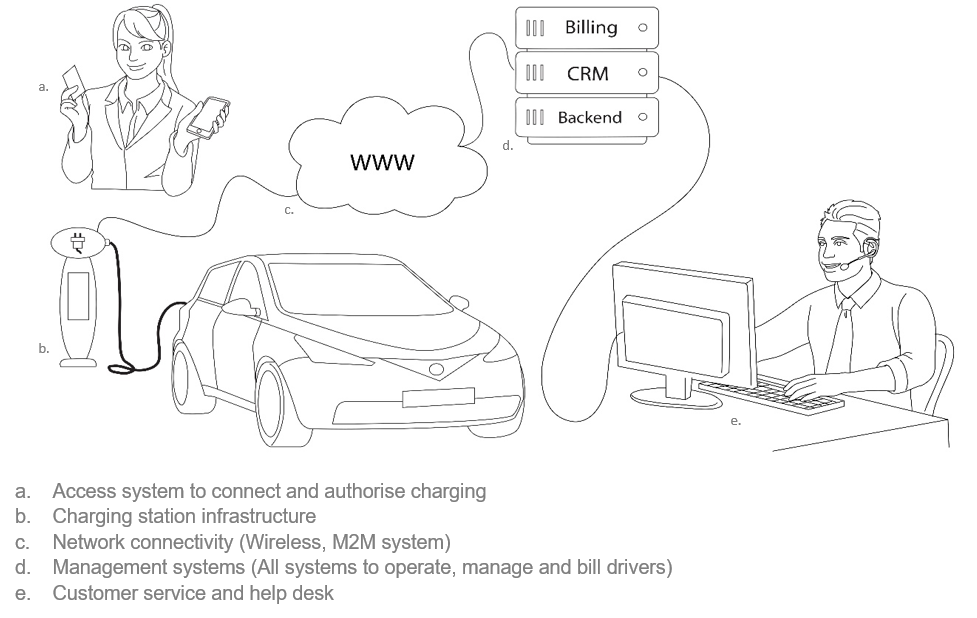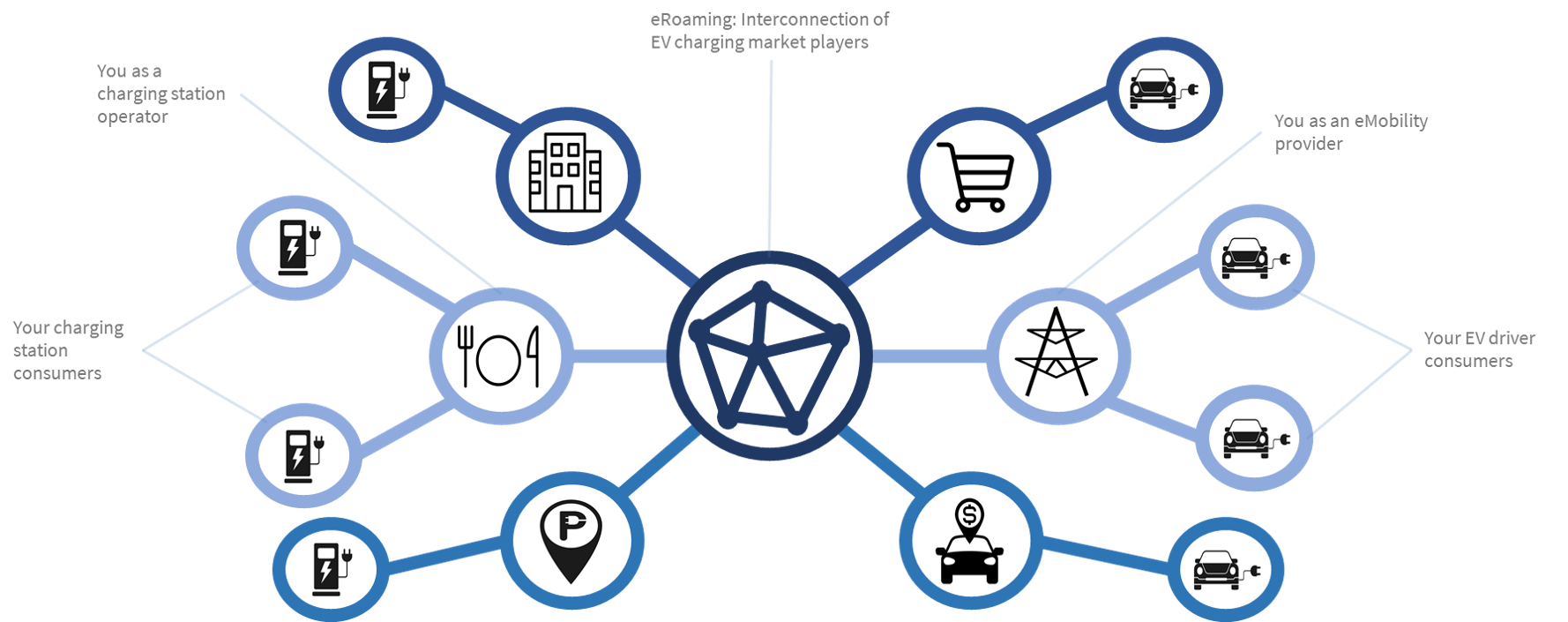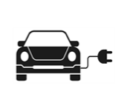Public charging network description
A commercial EV charging network is equipped with Smart Charging Stations connected to a backend to manage EV driver Charging transactions.
The eMobility service provider do manage:
- Drivers
- Authorisations
- Service management
- Billing

EV charging Ecosystem
Saascharge is an open EV charging platform supporting the interconnection and interoperability with any EV charging networks and market players. The objective is to enable any electric vehicle driver to charge anywhere.

EV Charging Market roles






EV Charging Access methods
There are multiple EV Charging Access Control solutions for registered users (A. Subscribers) or occasional users (B. Non-subscribers). Please find below a description of all these different EV charging station access methods.
A. Subscriber EV charging Access method: Requiring prior registration for payment
These are EV charging access solutions that necessitate registration with an eMobility Service Provider (EMPs).
Smartphone App
This method entails EV drivers downloading a smartphone application from an online store (e.g., Play Store, Apple Store…). EV drivers are required to register to access multiple functions such as charging station identification (QR code or map point selection), initiating and stopping charging sessions, setting up payment methods (e.g., credit card, Google Pay…), and other features like monitoring energy load and trip planning. These applications are connected to a backend system to facilitate transactions and manage payments.

Autocharge
Autocharge is the capability to recognize a vehicle connected to a charging station automatically. This functionality allows a charging station equipped with Autocharge to directly identify a connected vehicle using its Vehicle Identification Number (VIN) or MAC address. Subsequently, this data is transmitted to the eMobility platform for validation. Autocharge is considered a Plug & Charge charging method. The identification principle is similar to RFID, as the user must register the car data with the eMobility provider.

Plug & Charge (ISO 15118)
The ISO 15118 principle is comparable to Autocharge, with the distinction that this technology handles the EV driver’s subscription through smart contracts registered within the electric vehicle. Similar to registering a phone with a cellular network, the user selects their eMobility provider (network) directly from the car. This enables secure charging across multiple EV charging networks without the risk of multiple subscriptions, as with Autocharge.

B. Non-Subscriber EV Charging Access Method: On-Site Direct Payment
These are contactless methods that allow access on-site without prior registration.
QR – Web Application
This contactless payment method utilizes a QR code to open a web page, enabling users to initiate a transaction by entering payment details (such as credit cards or services like Google Pay or Apple Pay).

Payment Terminal
The payment terminal is a physical device attached to a charging station that allows drivers to initiate a charging transaction by swiping a credit card on an NFC reader. These Point of Sale (POS) software systems are connected to the charging network backend, which manages the charging process, and to a merchant bank that facilitates settlement of the credit card payment.

